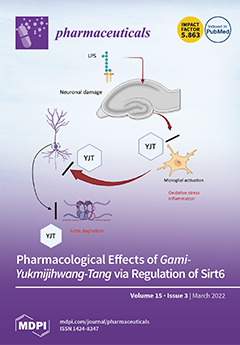The rising incidence of antibiotic resistant microorganisms urges novel antimicrobials development with polyphenols as appealing potential therapeutics. We aimed to reveal the most promising polyphenols among hesperetin, hesperidin, naringenin, naringin, taxifolin, rutin, isoquercitrin, morin, chlorogenic acid, ferulic acid,
p-coumaric acid, and gallic
[...] Read more.
The rising incidence of antibiotic resistant microorganisms urges novel antimicrobials development with polyphenols as appealing potential therapeutics. We aimed to reveal the most promising polyphenols among hesperetin, hesperidin, naringenin, naringin, taxifolin, rutin, isoquercitrin, morin, chlorogenic acid, ferulic acid,
p-coumaric acid, and gallic acid based on antimicrobial capacity, antibiofilm potential, and lack of cytotoxicity towards HaCaT, and to further test its antivirulence mechanisms. Although the majority of studied polyphenols were able to inhibit bacterial growth and biofilm formation, the most promising activities were observed for rutin. Further investigation proved rutin’s ability to prevent/eradicate
Pseudomonas aeruginosa and MRSA urinary catheter biofilms. Besides reduction of biofilm biomass, rutin antibiofilm mechanisms included reduction of cell viability, exopolysaccharide, and extracellular DNA levels. Moderate reduction of bacterial adhesion to human keratinocytes upon treatment was observed. Rutin antivirulence mechanisms included an impact on
P. aeruginosa protease, pyocyanin, rhamnolipid, and elastase production and the downregulation of the
lasI,
lasR,
rhlI,
rhlR,
pqsA and
mvfR genes. Rutin also interfered with membrane permeability. Polyphenols could repress antibiotic resistant bacteria. Rutin has shown wide antimicrobial and antibiofilm capacity employing a range of mechanisms that might be used for the development of novel antimicrobials.
Full article






